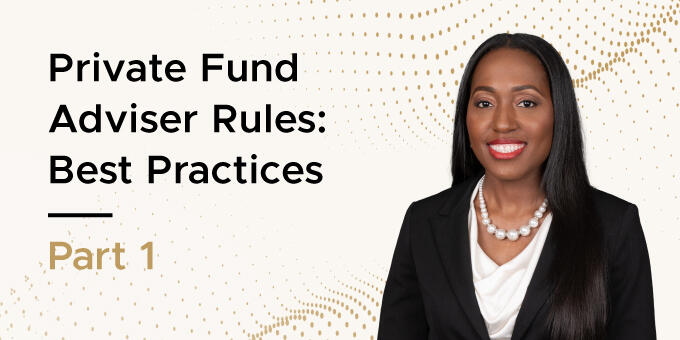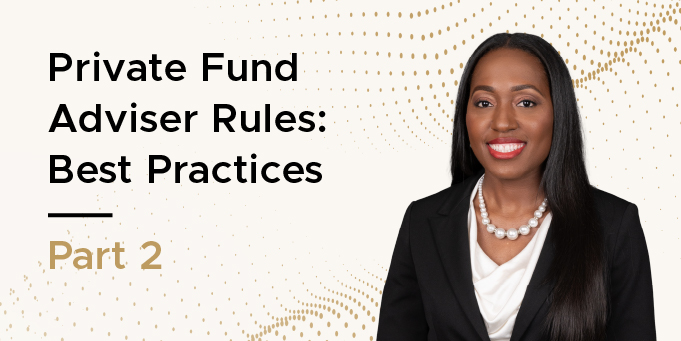Registered investment advisers who were subject to the Quarterly Statement Rule promulgated under the Private Fund Adviser Rules (“PFAR”) are now no longer required to comply with the requirements. Recently, the United States Court of Appeals for the Fifth Circuit (“Fifth Circuit”) vacated PFAR in its entirety thus alleviating advisers of the onerous compliance obligations. While PFAR is no longer in effect, advisers should keep in mind that the Securities and Exchange Commission will continue to focus on reviewing fees and expenses in examinations and enforcement actions. Therefore, advisers should consider establishing and improving processes to better identify and categorize fees and expenses. In this third part of the three-part video series on “Private Fund Adviser Rules: Best Practices,” TaNeka Ray, Senior Manager for EisnerAmper’s Regulatory Risk & Compliance Solutions discusses identifying expenses and creating an expense taxonomy.
TaNeka Ray:
Hello, welcome to EisnerAmper's SEC Regulatory Compliance Series. My name is TaNeka Ray, and I work in the Regulatory Compliance Group at EisnerAmper. Today I'll cover the last of the Best Practices to take from the Private Fund Adviser Rules.
Best Practices for Identifying Expenses and Creating an Expense Taxonomy
The Quarterly Statements Rule require SEC-registered investment advisers to private funds to provide investors with standardized quarterly statements detailing private fund advisers' compensation, performance, and fees and expenses. The information was to be presented in a table-like format with separate line items for each category identified. Well, recently the Quarterly Statement Rule was abdicated along with the Private Fund Adviser Rule, meaning the rules will not go into effect. While this may come as a sigh of relief, advisers should keep in mind that the SEC will continue to focus on reviewing fees and expenses in examinations and enforcement actions.
Therefore, advisers should consider setting up and improving processes to better identify and categorize fees and expenses. This can be done by creating what's called an expense taxonomy, a process by which the adviser names, describes and classifies all private fund fees and expenses. The expense taxonomy itemizes all fees and expenses, the methodologies used to calculate and allocate each fee and expense at both the adviser level and the fund level, the offsetting of such fees and expenses and broken deal expenses. The expense taxonomy can also be used to itemize and track fees and expense provisions in the adviser's fund documents and side letters.
That concludes Part 3 of the Best Practices to Take from the Private Fund Adviser Rules. Thank you for watching and, like always, please join me in the next episode in the SEC Regulatory Compliance Series.
Transcribed by Rev.com


